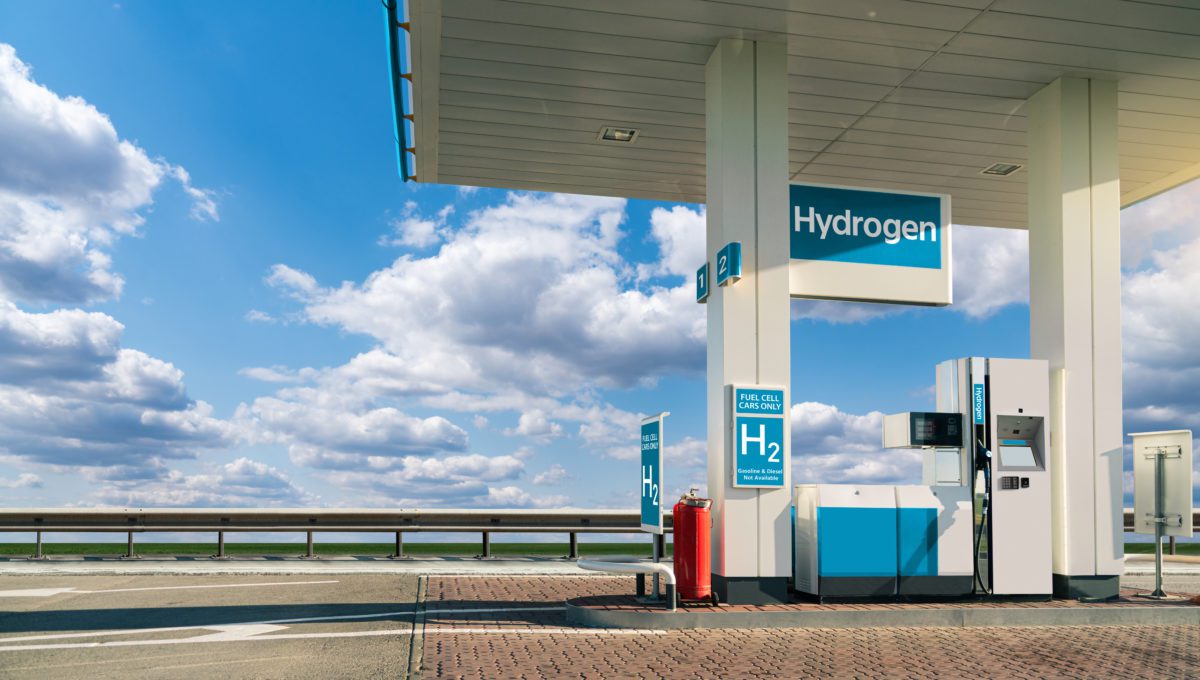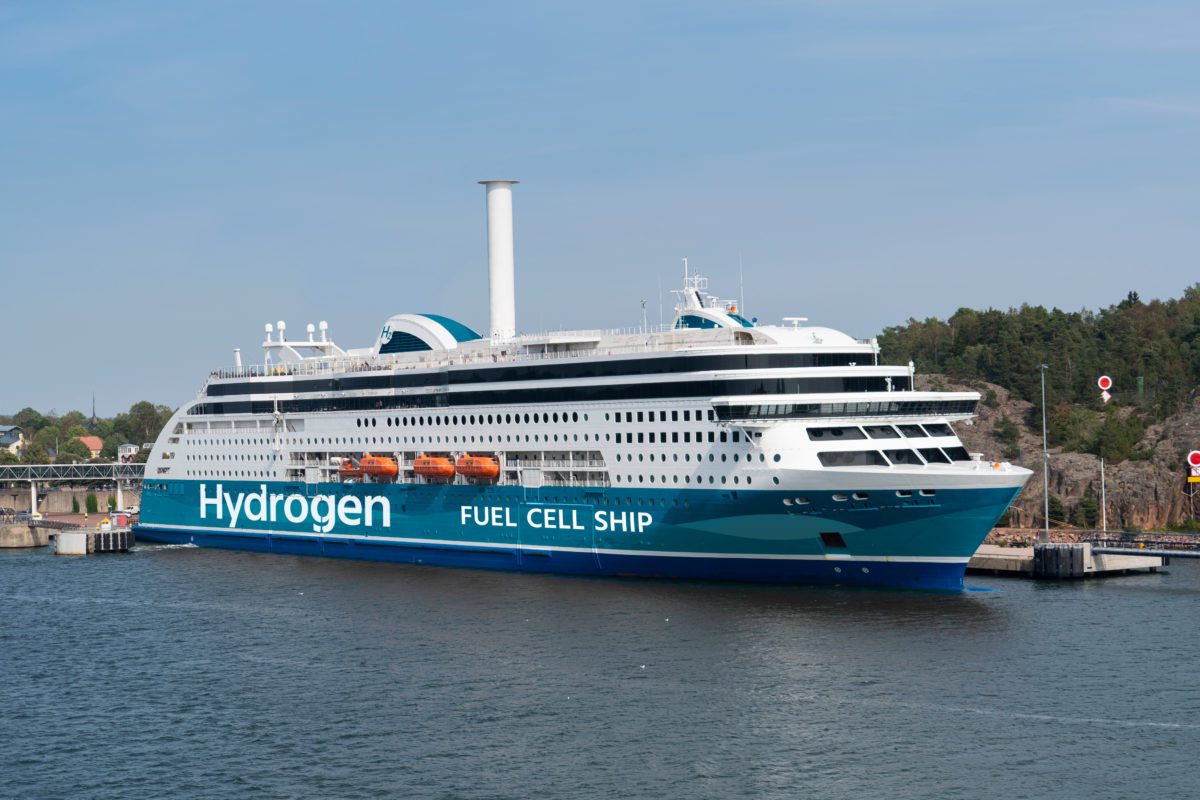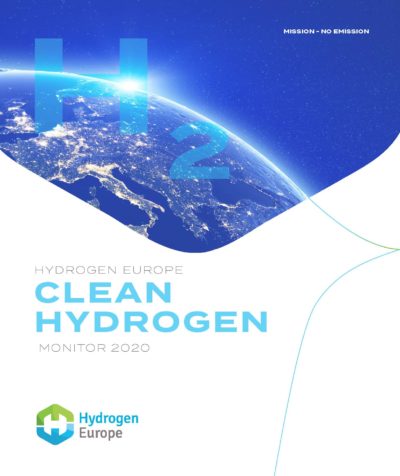Bastien Bonnet-Cantalloube & Felicia Mester
Share
Policy mentioned in the article
EU Green Deal
EU’s Recovery Plan
European Commission’s 2020 Hydrogen Strategy
EU Green Deal
Hydrogen Strategy
Energy System Integration Strategy
Offshore Renewable Strategy
Sustainable and Smart Mobility Strategy
EU Climate Law
Fit-for-55
Renewable Energy Directive (RED)
EU Emissions Trading System (ETS)
Carbon Border Adjustment Mechanism (CBAM)
CORSIA scheme
Energy Taxation Directive (ETD)
Alternative Fuels Infrastructure Regulation (AFIR – formerly AFID)
Emission Standards Regulation for cars and vans
FuelEU Maritime
RefuelEU Aviation
Trans-European Network – Energy (TEN-E)
Third Gas Package
Delegated Act of the Renewable Energy Directive
TEN-T regulation
Clean Energy Monitor
The Clean Hydrogen Monitor 2021 is a comprehensive source of data, facts and analysis surrounding the hydrogen market in Europe to support fact-based policy and business decisions, monitor development of the hydrogen market and assess the progress of clean hydrogen at replacing the consumption of fossil fuels.
Content of this year’s report:
- Current hydrogen demand andvproduction capacity
- Levelized cost of hydrogen analysis
- Planned projects (production and consumption of hydrogen in industry)
- Policies and incentives
- Funding opportunities
New policies and initiatives deeply affect the energy sector, and hydrogen is no exception. As a carbon-free energy carrier, hydrogen has been increasingly the focus of policy-makers, not least under the EU’s Recovery Plan, the European Commission’s 2020 Hydrogen Strategy, and in 2021 with the advent of the Fit-for-55 Package.
Hydrogen will become a crucial energy vector and the other leg of the energy transition – alongside renewable electricity – to replace coal, oil, and gas across different segments of the economy.
The climate crisis and its rising political prominence has led to the EU Green Deal – the key driver for the energy transition and the EU’s decarbonisation agenda. In late 2019, the European Commission presented it as Europe’s “new growth strategy”. It entails a more ambitious target for EU greenhouse gas (GHG) emission reduction (-55%, up from -40%) and the enshrinement of the carbon neutrality objective for 2050 in an EU Climate Law. To achieve this, the EU Green Deal also implies a broad review of EU legislations and policies, as well as new proposals.
Hydrogen will become a crucial energy vector and the other leg of the energy transition – alongside renewable electricity – to replace coal, oil, and gas across different segments of the economy.
The EU’s climate ambitions propel all aspects of EU policy with a view to shift our economies away from carbon emitting energy sources and carriers. This stretches from the energy and mobility sectors to taxation, industrial policy, climate and environmental protection. Hydrogen is the crossroads between climate policies and the deep decarbonisation of our economy.
Legislative acts and policies adopted or presented in 2020 and 2021
The adoption of the European Hydrogen Strategy marked a first step towards the development of an EU-wide clean hydrogen market. Its 2030 targets set the ambition for the subsequent adoption of the EU Climate Law, the Fit-for-55 package and the imminent publication of the hydrogen and gas decarbonisation package. This is the third economic revolution which will be marked by the establishment a proper functioning and liquid market for clean hydrogen as a new commodity in Europe, building up the backbone of a global clean hydrogen market.
Non-binding policies and strategies
In the EU legislative process, non-binding policy documents, strategies, communications, white papers and other soft law examples play an important role in setting a long-term vision for the direction that will be taken by EU law. The most fundamental ones for hydrogen are the EU Hydrogen Strategy and the Energy System Integration Strategy, both published on 8 July 2020.
The Hydrogen Strategy adopts the 2030 target of 2×40 GW of electrolysis capacity (40 GW in the EU and 40 GW in neighbouring partner countries) as a guiding vision. An intermediary target of at least 6 GW by 2024 is set too. The priority for the Commission is to develop renewable hydrogen, produced from renewable electricity. At the same time, the Strategy recognises the role of low-carbon hydrogen in the short- and medium-term to rapidly reduce emissions from existing hydrogen production and drive the development of the hydrogen backbone.
Hydrogen is the crossroads between climate policies and the deep decarbonisation of our economy.
The Energy System Integration Strategy aims to foster circularity and flexibility in the energy system by taking increasing advantage of synergies across sectors. Decarbonisation, energy efficiency, and security of supply are the main end goals. In this roadmap, hydrogen is seen as a technology to link the components of the energy systems, to store energy for long-term periods, and to decarbonise hard-to-abate sectors (especially trucks, industry, maritime, and aviation).
The European Commission published numerous supporting strategies in 2020 that include the Offshore Renewable Strategy which considers offshore hydrogen production and hydrogen pipelines as the most promising means of delivering offshore energy to consumption centres onshore; the Sustainable and Smart Mobility Strategy is also very relevant, as it provides the EU’s first clear targets for hydrogen refuelling stations: 500 in 2025 and 1,000 in 2030, up from 144 in 2021.
While the foundations for the legislative environment affecting hydrogen were already in place, the developments which took place following the adoption of the Hydrogen Strategy have the potential to be truly transformational for the clean hydrogen sector. Figure 15, below presents just a few of such developments which are likely to have a major impact.
EU Climate Law – A binding legal act
The (revised) EU Climate Law (Regulation (EU) 2021/1119 establishing the framework for achieving climate neutrality) was formally adopted on 30 June 2021 and effectivley sets a new EU target of reducing GHG emissions by at least 55% by 2030 compared to 1990 levels (up from 40% previously) and the binding objective of climate neutrality (net zero emissions) in the EU by 2050. This set the stage for the “Fit-for-55” legislative proposal package. fuel (If produced from renewable or low-carbon sources), hydrogen is indispensable to any scenario for reaching net-carbon neutrality
The Fit for-55 package and legislative proposals

michele-bitetto-84ZA1jFsfzM-unsplash_h
Building site. Milano, Italy. Source: Michele Bitetto /Unsplash
Proposed by the European Commission on 14 July 2021, the Fit-for-55 package represents perhaps the most fundamental change to the EU legislative acquis since the completion of the EU single market. The package touches upon almost all aspects of the EU economy, especially in the area of energy, industry and mobility. For the purposes of this report, we will limit ourselves to a short presentation of the legislative proposals within the Fit-for-55 package with the highest potential impact on the hydrogen market and highlight provisions which are most relevant.
The Renewable Energy Directive (RED) sets rules for the development of renewable energy across all sectors of the EU’s economy. The revised proposal raises the renewable energy target from 32 to 40% in total energy consumption, but also sets minimum binding targets for the use of renewable fuels of non-biological origin (RFNBOs) by 2030, which means some 50% of hydrogen consumption in industry and at least 2.6% of the total energy consumption in the transport sector (including renewable hydrogen consumed in refineries).
Specific provisions are also proposed to mainstream renewable energy in heating and cooling, such as 1.1% annual increase in heating and cooling becomes a binding baseline, and an indicative target of at least 49% renewables in the buildings sector; as well as to extend the scope of the Union Database to cover the tracing of liquid and gaseous renewable fuels and recycled carbon fuels and their life-cycle greenhouse gas (GHG) emissions. In its current form, the revised RED generates a demand for renewable-only hydrogen of at least 4.9 Mt and, as such, represents one of the main drivers for the widespread adoption of renewable hydrogen in the EU.
The EU Emissions Trading System (ETS) is a ‘cap-and-trade’ mechanism aiming to decrease GHG emissions by setting a maximum amount of emission allowances (the ‘cap’) per set periods. This cap decreases over time, following a linear reduction factor. Most allowances are auctioned, and the rest is allocated for free to some sectors deemed to be at risk of carbon leakage (an index that is based carbon intensity in the sector’s processes and the intensity of the sector’s trade flows)

Tokyo,,Japan,-,February,7,,2019:,A,Toyota,Mirai,Fuel
A Toyota Mirai fuel cell vehicle parked in a street in Shinjuku, Japan, 2019. Source: Ned Snowman
The ETS is slated to undergo a major revision, the main change being that covered emissions should be cut by 61% by 2030 (up from 43%). The higher target will be achieved through a combination of a higher LRF and a one-off reduction of the cap. This increased ambition of the carbon market will likely trigger the clean switch across multiple applications driven by higher CO2 prices (e.g., in ammonia, steel and cement production).
On top of increased ambition, the proposal suggests an extension of the EU ETS to most maritime transport, with a phasing-in period until 2026, road transport and buildings under a new separate ETS without free allowances, with the aim to cut emissions by 43% in these sectors by 2030 compared to 2005.
Revenues stemming from the ETS auctions are set to increase and be channelled towards the Innovation and Modernisation Funds and target climate-related purposes. In addition, a new Social Climate Fund could mobilise €72.2 billion for 2025-2032 to help most vulnerable households and transport consumers.
Furthermore, free allocation is proposed to become conditional on installation decarbonisation efforts. Furthermore, the revision proposal includes the production of all hydrogen production methods (i.e., electrolytic) under the scope of the EU ETS, making renewable and low-carbon facilities eligible for free allowances.
Some sectors covered by the current ETS – steel, aluminium, cement, fertilisers, and electricity – could also fall under the scope of a new legislation, called the Carbon Border Adjustment Mechanism (CBAM) that aims at protecting those industries against carbon leakage while gradually phasing out (over a 10-year period from 2026 to 2035) free allowances that those sectors receive. This may work by imposing on importers to the EU that they purchase CBAM certificates whose price will reflect the CO2 price level under the ETS for the corresponding goods, minus the free allocations still being received by those sectors. Free allowances will also be phased out for the aviation sector by 2026 (for intra-EU flights); external-European flights are to be subject to offsetting under the international CORSIA scheme.

CORSIA SCHEME
Phases of Corsia implementation
The proposed revision of the Energy Taxation Directive (ETD) heavily incentivises a switch to renewable and low-carbon hydrogen. The revision aims to tax the energy content of energy products rather than their volume and places them in tax categories based on their environmental performance when setting minimum excise rates. This ranking must be maintained when Member States set actual rates.

Self,Service,Hydrogen,Filling,Station
Self service hydrogen filling station. Source: Scharfsinn
Fossil fuel tax exemptions delivered for certain products would be phased out, ensuring that those are no longer taxed below minimum rates. After a 10-year transition period, this would also apply to fossil fuels used for intra-EU air transport, maritime transport and fishing – a crucial measure given the role of these sectors in energy consumption and GHG emissions.
The proposal foresees a preferential minimum tax rate of €0.15/GJ for renewable and low carbon hydrogen (during a 10-year transition period for the latter), incentivising the use of clean hydrogen in multiple applications, not least in maritime and aviation. In contrast, non-renewable fuels of non-biological origin (i.e., fossil hydrogen) are taxed at a minimum rate of €7.17/GJ. The lowest minimum rate of €0.15/GJ applies to electricity – regardless of its use and of the primary energy source used for its production.
The Alternative Fuels Infrastructure Regulation (AFIR – formerly AFID) proposal, as a directly applicable Regulation, proposes binding targets for the development of Hydrogen Refuelling infrastructure along the main transport axes. It promotes the rolling out of hydrogen refuelling stations at a maximum distance of 150km between stations. In order to consider the specificities for heavy-duty vehicles, as well as cars and light-duty transport, it requires a minimum daily capacity of 2 tonnes of H2/day and a 700-bar dispenser.
It is imperative that hydrogen moves from an afterthought to a central pillar of the energy system.
The proposal to revise the CO2 Emission Standards Regulation for cars and vans maintains its 2025 target and sets an increased emission GHG reduction target by 2030 on vehicle manufacturers, this time differentiating between cars (55% reduction) and vans (50% reduction). This is a strong policy incentive for the adoption of zero emission vehicles. In addition, the proposal includes a new target for 100% emission reductions in 2035 effectively signalling the phase-out of internal combustion engines under the current accounting scheme (tank-to-wheel) in favour of zero tailpipe emission vehicles.

Concept,Of,Hydrogen,Fuel,Cell,Ferry,Ship
Concept of hydrogen fuel cell ferry ship. Source: Scharfsinn
The FuelEU Maritime and RefuelEU Aviation are regulation proposals to promote the use of clean fuels in the maritime and air transport to decarbonise those sectors. Targets are set based on the fleet average GHG intensity of the energy used onboard by large ships (above 5,000 gross tonnage) for maritime. Emission level is reduced by 2% from 2025 to 75% from 2050 for all intra-EU voyages and stays in within a port of call covered, and half of voyages between EU and non-EU ports of call will also be included (aligned with the scope of the EU ETS extension).
For aviation, an obligation is set on fuel suppliers, as from 2023, to provide sustainable aviation fuels (SAF) to airlines at all EU airports. This obligation only considers SAF such as biofuels, advanced biofuels and RFNBOs which are chemically identical to the fossil fuels they are replacing. After 2030, it introduces a minimum share of e-fuels (RFNBOs). By 2050, the objective is a minimum of 63% SAF, of which at least 28% of synthetic fuels.
Although not part of the Fit-for-55 package, the proposal for the Trans-European Network – Energy (TEN-E) Regulation revision (2020) represents another key legislative milestone. Formerly, the legislation considered four energy infrastructure categories: electricity, gas, oil, and carbon dioxide. The 2020 proposal proposes the following five categories: electricity, smart gas grid, hydrogen, electrolysers, and carbon dioxide. The hydrogen sector is now fully represented with natural gas and oil infrastructure projects not being able to get priority status for accelerated permit-granting processes and improved regulatory treatment (PCI list). The Regulation foresees the planning for the conversion of natural gas infrastructure to hydrogen and the emergence of a ‘hydrogen backbone’.
Expectations for the future period (Q3 and Q4 2021 and 2022)
The imminent release of the hydrogen and gas decarbonisation package on 14 December 2021 will mark a key development in EU energy, climate, and transport policies. It is imperative that hydrogen moves from an afterthought to a central pillar of the energy system. Continuing to regulate hydrogen across different legislation and patchwork will delay the necessary energy transition and can lead to fragmentation, overlapping and sometimes contradictory legislation, and uncertainty for investors.
For the hydrogen sector, the revision of the Third Gas Package must remove barriers to hydrogen investment, create a level playing field with other net-zero technologies and promote a harmonised approach to hydrogen via the development of a dedicated regulatory approach where infrastructure, demand and production related issues come together.
December 2021 will also be marked by the publication of the Delegated Act of the Renewable Energy Directive on additionality, geographic and temporal correlation, currently precluding investors from financing projects aiming to replace carbon-emitting energy carriers with renewable hydrogen. It is time to recognise that renewable hydrogen creates demand exclusively for renewable energy not for fossil-based power.
Finally, the revision of the TEN-T regulation will be an opportunity for the Commission to align guidelines on transport infrastructure funding with the objectives of the EU Green Deal. It should provide further opportunities for the uptake of clean transportation modes, including for hydrogen technologies and refuelling stations, consistent with both the AFIR, as well as the revised TEN-E.

























